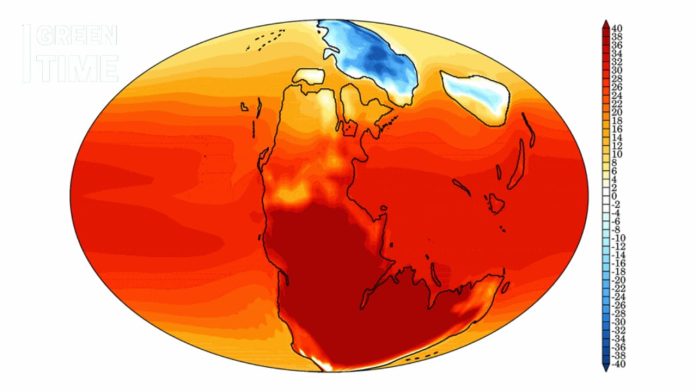A new study reveals a key factor in the Permian extinction, the largest mass extinction in Earth’s history. Published in Nature Geoscience, the research proposes that massive El Niño events were crucial. This extinction happened about 252 million years ago.
The Permian extinction, often referred to as the Great Dying, wiped out approximately 96% of marine species and 70% of terrestrial vertebrate species. For years, scientists have debated the primary causes of this global ecological disaster, with theories ranging from volcanic eruptions to asteroid impacts. However, the new study introduces a novel perspective by focusing on the potential influence of extreme climate fluctuations.
Researchers from the University of California, Berkeley, and the Smithsonian Institution used advanced climate models and geological data to reconstruct the climatic conditions of the late Permian period. Their findings suggest that mega El Niños—unprecedentedly intense and prolonged versions of the El Niño phenomenon we observe today—may have drastically altered global weather patterns and oceanic conditions.
El Niño is a climate pattern characterized by the warming of sea surface temperatures in the central and eastern tropical Pacific Ocean, which can have far-reaching impacts on weather systems worldwide. In modern times, strong El Niño events can lead to severe droughts, floods, and disruptions in marine ecosystems. The study proposes that during the late Permian period, similar extreme events could have caused dramatic shifts in climate and ocean circulation.
These mega El Niños might have led to a cascade of environmental stresses, including severe temperature fluctuations, decreased oceanic oxygen levels, and disrupted food chains. Such conditions would have been detrimental to both marine and terrestrial life, potentially exacerbating other stress factors and leading to widespread extinctions.
The research team’s findings are based on detailed analyses of ancient sediment layers and isotopic data, which provide insights into historical climate conditions. By comparing these ancient records with modern climate patterns, the scientists were able to identify signatures of extreme El Niño events that align with the timing of the Permian extinction.
This new perspective on the Permian extinction emphasizes the complex interplay between climate phenomena and mass extinction events. It also highlights the potential for similar extreme climate patterns to impact modern ecosystems. As researchers continue to explore the links between climate variability and extinction events, this study serves as a crucial reminder of the interconnectedness of Earth’s climate system and its profound influence on the biosphere.
The implications of this research underscore the importance of understanding and mitigating the impacts of extreme climate events, both past and present, to better protect our planet’s future.

